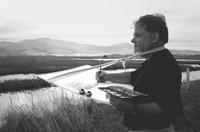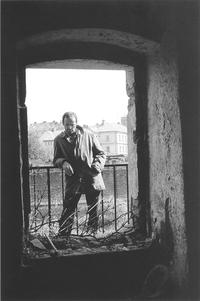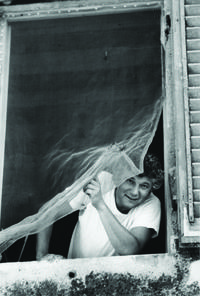Prague Fantastic Realism
Prague City Gallery, Colloredo-Mansfeld palace
22. April 2016 - 4. September 2016
curators Jitka Hlaváčková, Vojtěch Lahoda a Marie Rakušanová
At home, Jan Jedlička, Vladivoj Kotyza, and Mikuláš Rachlík, three friends who grew up in bourgeois families, refer to Josef Stalin as Vishittyonovich, while President Novotný resides in Castle Orlík and plays Mariáš. We find ourselves in the 1960s gazing upon an unknown and remarkable slice of the work of three young graphic artists, that is, Prague fantastic realism. Even though it might be considered a mere episode in Czech art history, it accurately, and unfortunately, reflects a significantly longer period of our history, which often produced such absurd situations that a real artist could not manage it within the bounds of Socialist Realism.
While viewing the exhibition, you will have the opportunity to listen to audio commentary by Marie Rakušanová, Jan Jedlička and Vladivoj Kotyza. And texts by Vojtěch Lahoda, Marie Rakušanová and Jitka Hlaváčková will provide you with historical, art historical, and philosophical insight. Jedlička, Kotyza and Rachlík admired the old masters, paged through the journal Hara-Kiri or strolled through ruins and waste dumps as if seeking out the remnants of old times. Of course, as Marie Rakušanová writes, “In their version, nostalgia is not a sentimental attachment to the past; it is not a manifestation of the ‘disease of the imagination,’ but rather of imaginative health. (…) It shifts the object of nostalgia not only along the temporal axis between past, present and future, but also deflects it in the direction of alternative realities and fictional times.”
pb
JITKA HLAVÁČKOVÁ is an art historian concentrating on modern and contemporary art. Since 2006 she has been the curator of the Prague City Gallery, where she has been managing a collection of photographs and new media since 2015. She received her Ph.D. in 2015 from the Institute of Art History at Prague’s Charles University on the subject of the concept of sound in the history of graphic art. She also concerns herself with art in the public space.
VOJTĚCH LAHODA is an art historian concentrating on the history and theory of modernism and the avant-garde in the Czech lands within a European context. From 1993 until 2001 and again beginning in 2012 he has been the director of the Institute of Art History of the Czech Academy of Sciences. Since 2000 he has been teaching at the Institute of Art History at Prague’s Charles University, and since 2007 has been a university professor in the field of the history and theory of art.
MARIE RAKUŠANOVÁ is a an art historian concentrating on Czech and German modern art and philosophy. From 2002 to 2009 she was curator of Prague’s City Gallery. Since 2005 she has been a technical assistant at the Catholic Theological Faculty of Charles University in Prague. In 2011 she was named docent in the field of art history in the Faculty of Arts of Charles University of Prague.







